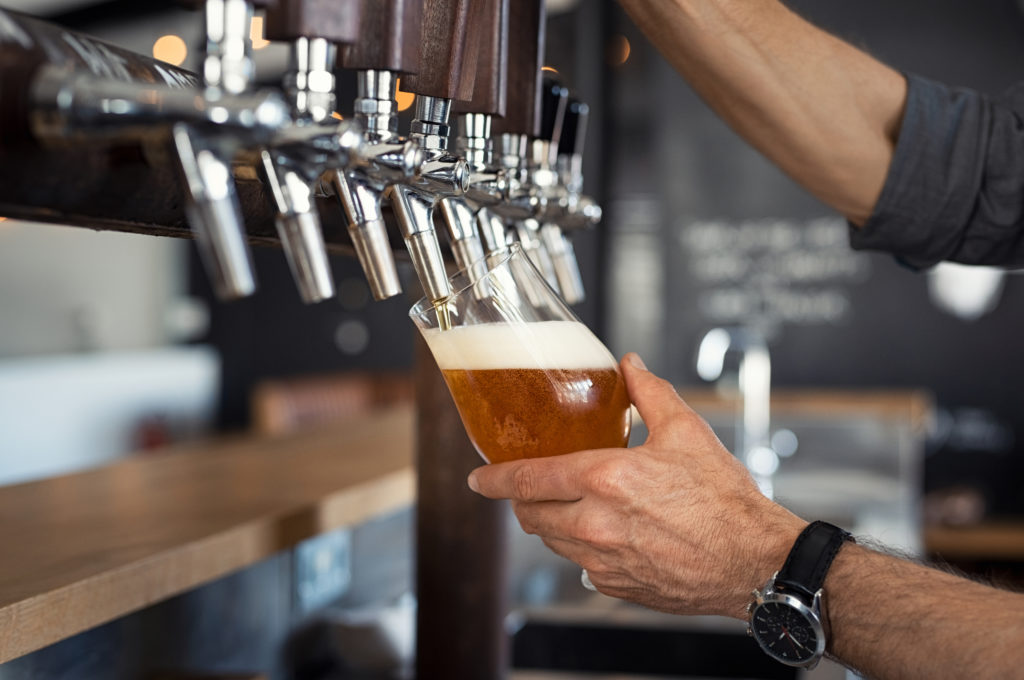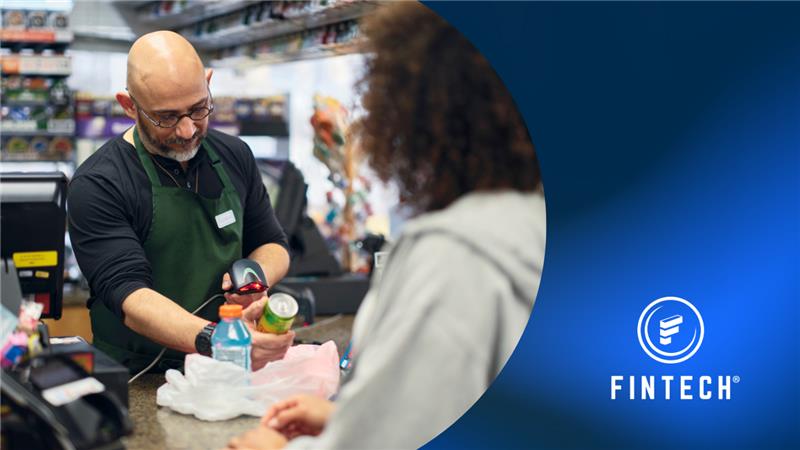Thankfully, for many in the hospitality industry, the most challenging year since prohibition has finally come to a close, and operators are setting their sights on new strategies for success for 2021. But as we continue to navigate the pandemic’s long-term effects and the impact of changing regulations, COVID vaccinations, and evolving customer expectations, agile strategies will be more important than ever for hospitality operators. During our latest panel discussion sponsored by the Michigan Restaurant and Lodging Association (MRLA), Fintech learned how four Michigan operators are approaching these new plans and what areas of business the pandemic has transformed for good.
Check out our conversation with panelists Timothy Tharp with Grand Trunk Pub and Checker Bar, Craig Davies with Greenleaf Hospitality Group, Mark Mitra with Kensington Grill and Bar, and Jeff Lobdell with Restaurant Partners Management, LLC to learn more.
I want to start by acknowledging that COVID-19 now has three vaccines hot on its tail, and it feels like we’re finally headed towards recovery as an industry. I know that each of you are bound by your city, state, and county regulations, but as an industry leader, how quickly do you expect on-premise traffic to return to pre-pandemic levels at your locations?
Mark: In Michigan, we have some of the most cautious or maybe aggressive pandemic precautions, so we are currently at 50% capacity. While it’s not clear when we’ll open to 75% or 100% capacity, lifting restrictions will have a big impact on when our numbers will return. If we opened to 100% capacity today, I feel that we’d jump right off the bat with people who want to get out and enjoy life again – but there will also be a group of people that will hold off on visiting until the pandemic is completely in the rearview mirror. We expect to get back to our normal numbers at least six months after the capacity restrictions are lifted.
Craig: I would echo Mark’s sentiment here. From a hotelier standpoint, we’re looking at different segments and when those segments might return. We have a local segment already starting to use their stimulus checks or tax returns to stay with us. The corporate traveler segment will probably take longer, and I think we’re still about six months out from seeing this segment come back. And then there’s group business for things like conventions, which I believe will return in about a year.
For our restaurants, the pent-up customer demand will exist that meets the capacity restrictions, but there will still be people who are concerned about heading out into the public space without full inoculations.
Jeff: I think if we didn’t have all these restrictions, we would have normal numbers now. I just returned from a trip to Florida, and they’re having their busiest times ever – I have restaurant friends in Florida, Texas, Ohio, and Indiana, and they’re all back to pre-pandemic numbers. As soon as the restrictions are lifted here, our local consumers will be here, the travelers will be here, and we’ll be ready to go.
Timothy: My locations are in the Central Business District of Detroit, and a lot of businesses in that area are dependent on sports events, conventions, and concerts, so our return is hinged on the decisions made in Lansing. I agree that the consumer demand is there – even if only 30% of the market is wary of going out, the rest are tired of in-home zoom calls and are ready to get out. Once restrictions lift and things progress with getting the pandemic behind us, we’ll come out of the gate strong; once events start taking place again, we’ll be back. Hopefully, that will be in about three to six months.
Knowing that re-openings are coming, hopefully, more quickly than not, what are the top three operational areas that you will be focusing on as you transition to 75% or even 100% capacity?
Craig: Cleaning SOPs are top-of-mind for us, as well as marketing and communicating to guests what we’re doing. Guests need to feel safe to feel comfortable with visiting your establishment. We’re also focusing on staffing and training. If we were to open to 100% capacity right now, I don’t think I’m the only one on this panel that would be concerned about whether or not we could hit pre-pandemic numbers with our current staffing levels. We’re working hard to get people on staff who want to wait tables and clean hotel rooms because there was a lot of attrition last year in the hospitality industry. The difference-maker will be staying up-to-speed with a plan to welcome guests, marketing and communicating what you are doing, and ensuring you are staffing and training properly.
Timothy: We took the opportunity during the last year to rebuild our kitchens and some of the infrastructure in the dining rooms to better serve the influx of customers when they do come back. The starts and stops in regulations with little to no warning have made labor and staffing very difficult, so we focused on automation and quick-service options, which will keep us prepared if we run into staffing issues. Like Craig said, if we could open tomorrow, the biggest problem would be staffing; so much of what we’ve done is built efficiencies that allow us to do more with fewer people.
Jeff: Number one is the sanitation and cleanliness and rebuilding the confidence of our guests. The media hasn’t done a great job of building confidence in the hospitality industry, although I’m sure we’d all agree that restaurants and hotels are probably some of the cleanest and safest places in the community. So, we’ll continue to build trust through mask-wearing and enforcement, lots of cleaning, contact tracing, and continued staff screening. Number two is staffing, which is very difficult right now. At this time last year, we had 20 restaurants and 700 employees. Six weeks ago, we had 17 restaurants, only eight operating, and about 50 employees. Most of our staff was unfortunately furloughed, and we tried to take care of them the best we could. Today, we have 18 locations that have reopened and 500 employees back, but we’re still working hard to recruit. The third is that we reconfigured some of our restaurants to fit online ordering and third-party delivery better. Now that to-go makes up about 30% of our ordering, we’ve had to add a second line in some of the kitchens to ensure we’re meeting the demand efficiently.
Mark: I would really reiterate what everyone has said. One is letting our customers know that cleanliness is top-of-mind and that we’re committed to maintaining the current levels of sanitization. Much of what we are doing we were doing all along, but instead of being discrete about it, we’re now making it very obvious that it’s a priority. The second is employment. We’re utilizing a lot of word-of-mouth to recruit, reaching out to employees and past employees to see if they know anyone who would be a good fit. The third is that we’re using more social media to let people know we’re open and ready to serve them, have safe practices, and have safe alternatives for outdoor dining.
From @KGBBQNewHudson on Facebook, Kensington Grill delivering safe service for St. Patrick’s Day.
I suspect that most retailers had to onboard or upgrade technology at some point during the pandemic to make it through effectively. So, as you move forward and we get back to normal, which technologies are you keeping?
Craig: There’s no question that contactless technology is at the forefront of everyone’s discussions right now, specifically in the hotel world. Mobile check-in and check-out, mobile access to the guestrooms, really anything that our guests can use to gain access to or through using their own devices is something that we have been investing in over the last ten months. We’re also using QR codes, and I’m sure my restaurant friends will remember that QR codes are a technology that came about a long time ago and then went away – but then COVID-19 happened. We had to develop an easy solution for our guests to gain digital access to information like menus and services both in the rooms and in our restaurants, so we opted for QR codes. We also replaced the bulky binders that used to be in our guestrooms with QR codes, and I think those will stick around for a while. People are getting used to it and actually enjoying the ease of use.
Our guests are starting to expect the contactless feel and are enjoying the ability to walk right in from the garage to their rooms without contact, so our personal-touch service has to come out in other areas. To Mark’s point, it’s a bit of “cleanliness theater” with our white gloves being replaced by rubber gloves, making sure we’re preparing the cleanest environment for our guests.
Jeff: Online ordering is something that will definitely stick around. When we first shut down for 77 days, we quickly realized that online ordering would be a priority. Only one of our locations used online ordering before the shutdown, and while it was a little clunky, that location was able to remain open and profitable during the first on-premise closure. We took what we learned at that location and started incorporating online ordering or third-party ordering for other restaurants during our reopening over the summer. The consumers became accustomed to ordering this way, so when the second shutdown came, and we were closed for 75 days, we were able to keep eight locations open, which was a game-changer. Now that we’re open, it will be a challenge to balance in-house demand with to-go, but we’re going to keep the technology and continue to learn from it. The second thing is an app-based waitlist, which allows customers to join a virtual waitlist through their phone. It’s been really helpful in keeping guests happy and filling up some of our slower times, so it’s something we’ve been enjoying and will continue to have in our restaurants.
Mark: The QR code – we tried to introduce them pre-pandemic, and it wasn’t well-accepted. Now it’s become the easiest thing to implement for our menus. We are also using online ordering and delivery services, which we didn’t previously have too much demand for. These services are accounting for about 30% of our business, and while I think that will drop to about 15% as people start to visit in person, the consumer preferences and behaviors will change in that area permanently. One technology that we used that I think will go away is contact tracing.
Timothy: We realized that we would have low margins when we returned to business, so costs had to be controlled super tight. We upgraded our POS and did everything we could to interface with our vendors and get purchase orders lined up with sales numbers and ensure we’re pricing everything correctly. We used Fintech extensively to do that. It’s amazing how far out of whack some of our pricing was before Fintech, so getting those pieces in place for low volume is really helpful. As we get going, we’ll add in online ordering and a waitlist app because they will help smooth out the surges that we’re going to face.
Being in the Central Business District, we realized that we didn’t have the residential density for online ordering or takeout right away, so we took a look at the market and decided to close down entirely and completely rebuild the restaurants. We rebuilt our kitchens and dining rooms in both Grand Trunk Pub and the Checker Bar (which was maybe the ugliest building downtown)! We realized we needed to come back looking better and serving stronger than ever before. I will say that we certainly used a lot of technology during the rebuild by using everyone else’s online ordering systems and everyone else’s third-party delivery systems – I’ve never ordered so much Grubhub! It was great to watch from the consumer’s perspective and take notes on what some of the most successful operators were doing.
From grandtrunk.pub, a photo of the original Grand Trunk Railway ticket counter – a relic that Grand Truck Pup is paying homage to through their renovations.
Moving on to our relationships with customers – I think we all agree that managing relationships has been challenging throughout this pandemic, but the idea of managing relationships with customers seems almost daunting. They are coming to you for an experience and service, yet you still have to hide behind a website, plexiglass, or a mask. As you begin to welcome guests back into your dining rooms and hotels, how are you preparing to meet their hunger for human interaction? What are you doing to elevate the relationship and take back the one-on-one contact that they (and you) have been missing?
Timothy: Everyone is so hungry to interact and so hungry for that personal touch. One of the upsides to going to 10% of our staff is that we can build back with people who are also really hungry for that, who are committed to serving the community. We want to share our story about the renovations, but we also want guests to feel as comfortable as possible and give them time to ask questions and feel safe again. We’re the safest industry out there, but we have so much oversight over us right now. It’s easier to drive nuclear waste through a playground than it is to serve a plate of eggs! I think we want to just get the message out that, as an industry, we’re interacting on the ground level with the community and that we are a safe place to be because that’s what we are.
Craig: It’s tough to express the joy of welcoming our guests in with half of our faces covered. So, we’ve gotten really into “smile with your eyes” and training staff on how to be expressive with body language. Hopefully, the masks will go away, and we’ll be able to see everyone fully soon. Outside of that, we are really listening to the voice of the customer to learn what it is that they want to see on the property and then making adjustments as needed. It’s a balance of understanding where each guest is comfort-wise; that’s why the reviews and surveys are so important. We’re in hospitality, and we’re here to serve people, so the more personalization you can add, the more you bolster your reputation within the community.
From @Greenleafhospitalitygroup on Facebook, service with a “smize” at Old Burdick’s!
Jeff: The importance of our guests and our guest relationships are so huge. We have an incredible bond in each restaurant; they’re really like family. When we shut down and reopened, we saw genuinely emotional reunions between our staff and our regulars. We missed out on a lot of the personal connections during the second shutdown (which took place over the holidays), so we did our best to stay in contact with our customers through email newsletters and social media. Our guests have been really patient and generous with us through our re-openings, even though we were dealing with all new protocols and adjustments after going dark for three months. We value our guest relationships even more now.
Mark: There’s one positive thing that COVID has provided us, and that’s time. When we were at 50% capacity, we encouraged our staff to spend time with those customers (if the customer wanted it). A lot of people said that it was the first time they’d been out to eat in six months to a year, and they just wanted to talk to someone that wasn’t their spouse. So, we were there for them, and that’s worked well for us. We also made light of the mask situation by having a sort of “mask of the day.” We’ve also been able to put a bit more theater into our drink-making, allowing us to reinforce what the hospitality experience is all about.
The demand for alcohol has remained unchanged through the pandemic. When I first started in this industry, someone said that alcohol is recession-proof – people drink when times are good, and they drink when times are bad. I think now it’s safe to say that alcohol is pandemic proof too! How has the pandemic changed your strategy, and what are you going to do differently moving forward?
Craig: Thankfully, in downtown Kalamazoo, we were allowed to have a social district, where we set up a little bar on our property and then served drinks that guests could carry off the property. We were really happy to take part in that. Craft cocktails blew up for us, taking over a bit for craft beer, but we’re still selling a ton of craft beer too. We just got creative with setting up shop and getting alcohol to the consumers when they wanted it.
Mark: We’ve gone from craft beer to a lot more craft cocktails as well, and we’ve upped the theater around them now that we have the time. We’re focusing on drinks that are pleasing to the eye and the palate, and it’s working well.
Timothy: Like a lot of things, we’ve narrowed our scope and tried to keep it simple, so we’ve narrowed down some of our beer and cocktail offerings. With the low-volume items, we have really knuckled down on the margins to make sure that what we do sell is priced correctly. And again, Fintech has helped us do that. We do have a carryout license, so we’ve also been doing a bit of that.
Jeff: A few of our restaurants are doing craft cocktails to-go, and that’s been pretty successful for people who want a drink at home but don’t want to get all the individual ingredients. We’ve also started offering flights with our extra time, like a margarita flight or a bourbon flight. I think a lot of the beer, wine, and liquor is a little like the food – people were pent up at home and now want to come out for their favorites. I don’t think it’s a time to get wild and crazy. Whatever your favorites, put those at the front of your menu and keep it simple.
@beltlinebargr continues to serve the classics, like these fan-favorite margaritas.
The pandemic has left us socially distanced yet unified in a very strong way around common needs within the industry. With the Michigan Restaurant and Lodging Association, operators were able to roll up concerns to one very powerful voice that helped to pave the way for opportunities that may not have been there otherwise. What can you tell our audience about the critical benefits of industry advocacy in Michigan?
Timothy: MRLA is one of the best state associations – they’ve won awards and been recognized as such. The team that Justin Winslow heads up is second to none, and it guided a lot of operators through this pandemic. They were relentless with advocacy in Lansing and communication of information back down to operators. They were charitable and lifted their member restrictions through the summer because they realized that we just need restaurants to survive. So many benefits were available to members and non-members during this vital time. They’ve given information on everything from how to apply for stimulus money to when future closures may occur and everything in between. More than ever, I’m proud to be a part of that organization, and I don’t know what any of us would have done without them.
It was an honor to host this panel; we learned so much great information from each of our panelists! Ready to watch the full conversation? Click here to view the webinar recording and even listen to a few bonus questions.






